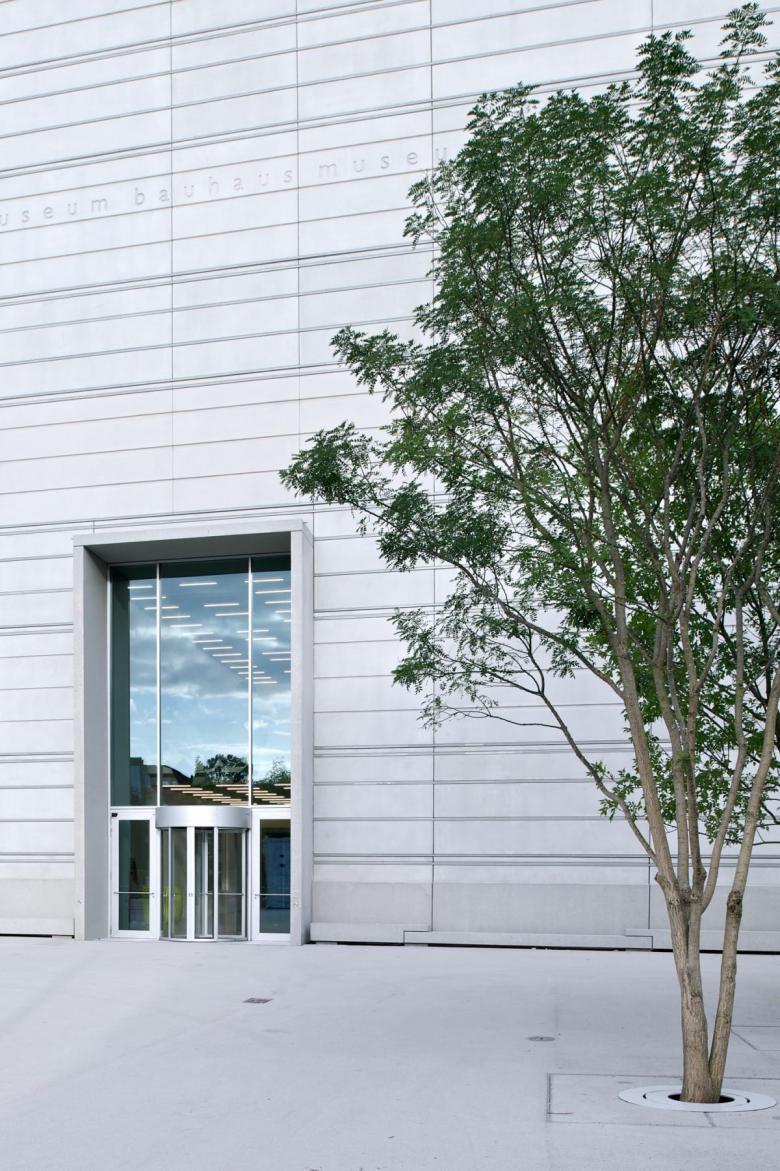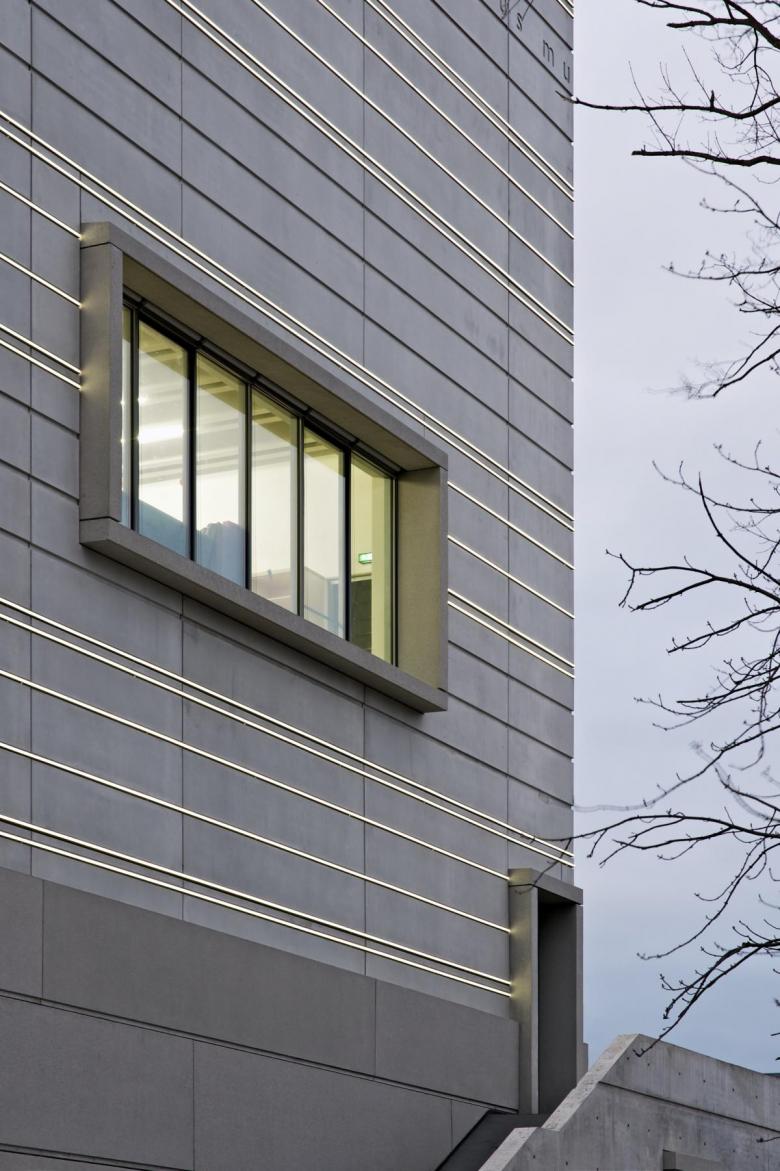Lines in the Facade
The exhibition spaces of the Bauhaus Museum in Weimar, Germany, sit behind a facade of stacked precast elements, but architect Heike Hanada didn't originally plan it that way.
Location: Weimar, Germany
Client: Klassik Stiftung Weimar
Architect: heike hanada_laboratory of art and architecture
Precast Concrete Elements: Hemmerlein
In April 2019 the new Bauhaus Museum opened in Weimar, Germany, marking the 100th anniversary of the influential Bauhaus school. For a long time Weimar neglected its status as the birthplace of the Bauhaus (the school moved to Dessau in 1925), focusing instead on Goethe's legacy and German classical music. This changed as the Bauhaus centennial approached. The Klassik Stiftung Weimar and the city of Weimar set up an open competition in 2011. Heike Hanada, an architect from Berlin and a professor at the TU Dortmund, together with architect Benedict Tonon, received the third prize for their design, but they were able to procure the commission in the subsequent VOF procedure.
The design is a minimalist cube with five levels and approximately 2,250 square meters of exhibition space. Construction began in 2015 and four years later harsh criticism was levied at the building upon its opening: "Nazi architecture" and "concrete bunker" were some of the phrases in the press. Sources of displeasure were the monumentality of the cube, such elements as the plinth, cornice and attic, and the concrete facade. However, the design had gone through several iterations, originally envisioned as an exterior of in-situ concrete with a glass curtain wall hung in front of it; etched black lines and OLED foil would illuminate the glazed facade. But Hanada, who had served as a research assistant at Bauhaus-Universität Weimar from 1999 to 2007, was never satisfied with the glass facade.
In the end, the facade being made of concrete was due to the construction schedule and construction costs. The museum was originally budgeted at 23 million Euros but eventually ended up costing 27 million Euros. This escalation led to a concrete facade, but not exposed in-situ concrete. Instead, the exterior is made of pre-stacked, rear-ventilated precast concrete hung on the cast-in-place concrete walls. Hanada approached the engineers at Hemmerlein, concrete specialists from Bodenwöhr, to develop parts with two standard widths, three different heights and a constant depth of 20 centimeters. The precast concrete contains 50 percent white cement, giving an appearance the architect is satisfied with: the fine, almost polished concrete stands in contrast to the base, parapet, and entry portals that are all sandblasted concrete.
To break the solidity of the concrete cube in Weimar, Hanada articulated the joints that are common for precast concrete and gave each facade a distinctly irregular composition through asymmetrically placed openings. Each side then has its own theme: the east side shows itself with a large portal, the south side with oversized horizontal windows, the west side with narrow vertical windows, and the north side with a single oversized opening. These openings intersect with the horizontal lines of the precast joints, giving the cube a subtle movement and breaking up its severity, at least according to the architect.
Another facade element is the lighting, which Hanada took on herself, given its importance in the building's expression. Twenty-four lines of LEDs wrap the building in four groupings of six lines that are bordered at top and bottom by pairs of double-lines. Visitors watched a play of light on the facade during the museum's grand opening, since the individual LED strips can be controlled and dimmed separately, enabling gradients of light. Now, at dusk, the lights shine brightly then dim, shimmering gently during the night, giving the impression of a weightless building — not a monumental cube.
A version of this article originally appeared on German-Architects as "Auf die Fuge kommt es an."




